Not sure how to replace your pool pump’s impeller? Can you do it yourself? And what’s involved in doing it?
You’re in luck today!
I recently dismantled a pool pump I had. As part of the process, I removed the impeller and shaft seal. It wasn’t a very difficult job to take the pump apart. The hardest part was actually getting the impeller off.
To save you some time, I took photos and documented the process, and created a step-by-step instruction guide for removing a pool pump impeller. I’ve also included some tips and tricks.
Article Contents
How to Remove and Replace a Pool Pump Impeller
The pump I replaced the impeller on for this article was a Davey pump. The process is very similar for most pumps like Pentair, Hayward, Jandy, Onga, Sta-Rite, Harris, etc.
Step 1) Remove the Pump
To keep this article a little more concise, I’m going to gloss over the pool pump removal. I’ll write another guide to cover this in a future article.
To summarise the process, switch off the pump at the breaker and undo the pressure release valve in your pool filter. Now you can unplug the pump from the outlet.
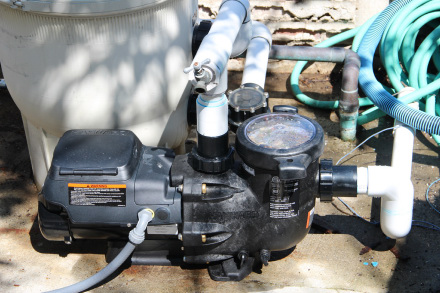
If the pump is wired in, unless you’re a qualified electrician, don’t attempt this. To give you a general idea, you’ll need to open the terminal box on the pump and loosen the terminals holding the power cord, so you can remove it.
Very Important: Electricity is deadly. Make sure you’re qualified and always check with a vault meter that there is no power going to the pump before you do this step.
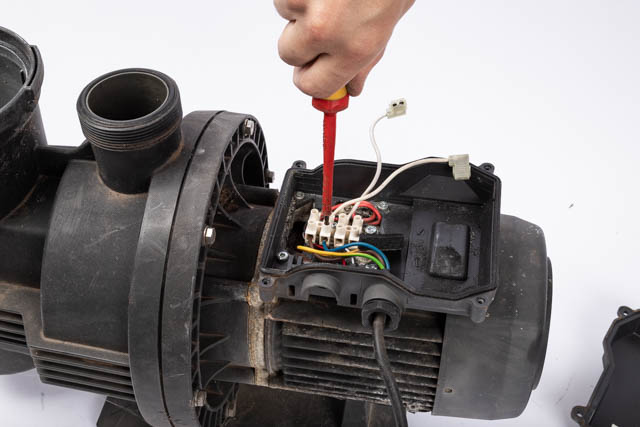
Loosen the unions from the pump and pull the pipes off the inlet and outlet of the pump. Take the pump lid off. Sometimes pool pump lids get stuck on. Finally, undo the screws mounting the pump to the floor. You should be able to get the pump out now.
If you haven’t already done so, drain the water out of the pump by tipping it upside down. Open the pump lid too, so you can tip the water out.
Step 2) Open the Pump Housing
Pumps are made up of two parts. The pump housing contains the impeller and the strainer basket. This is the wet side of the pump. The other half is the electric motor.
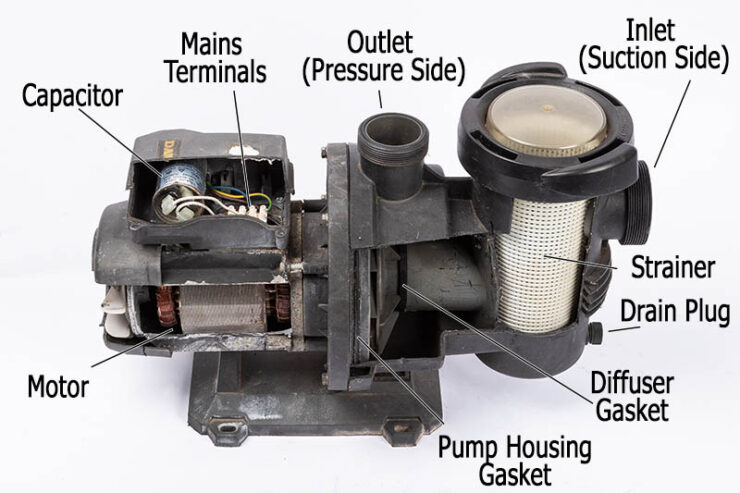
Open the pump housing by removing the bolts or screws which hold the seal plate to the housing of the pump. After you’ve removed these, you’ll be able to open the pump housing. You may need to pry it open but it will open if you’ve undone all of the bolts.
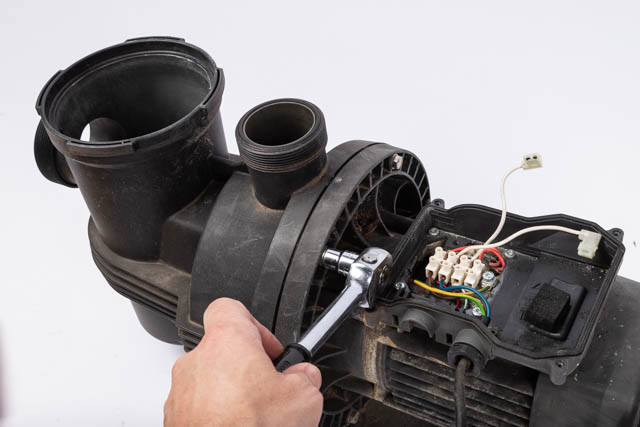
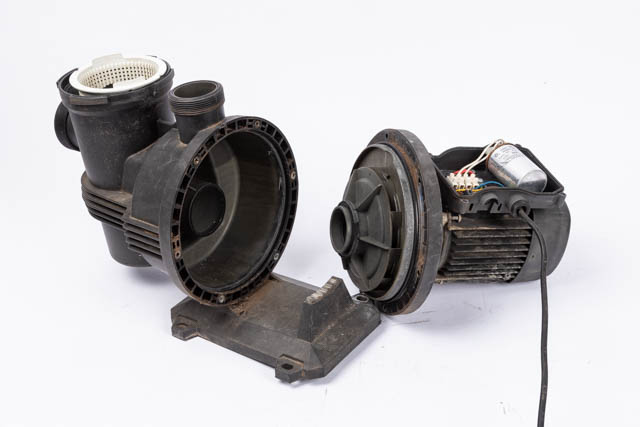
Step 3) Remove the Diffuser
Sometimes the diffuser will stay with the motor side of the pump. Other times it will stick to the pump housing. Just pull it off. If it doesn’t pull off, check for any screws holding it.
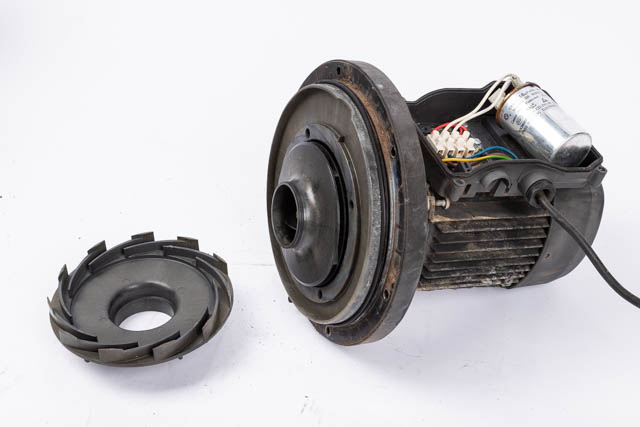
Note the condition of the seal on the diffuser. It’s good practice to replace the diffuser seal while you have the pump open.
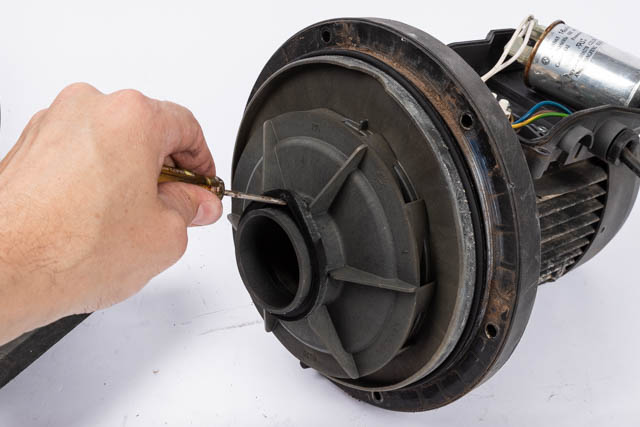
Step 4) Lock the Shaft
With the diffuser removed, you can now see the impeller. To undo the impeller, it needs to be unscrewed in a counter-clockwise direction. But before you can do this, you need to lock the motor shaft, otherwise, the impeller will just spin and not loosen.
To lock the shaft, at the back of the pump in the middle, there is either a slot for a screwdriver or a wrench. This is to lock the shaft and prevent it from spinning.
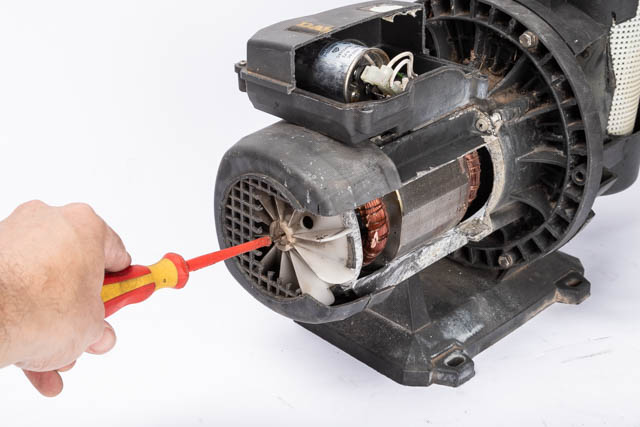
In some pumps, you’ll need to take the back cover off the pump to access it. Once you’ve found this, use a screwdriver or wrench to hold it firmly.
Step 5) Unscrew the Impeller
Before you attempt to undo the impeller, check there isn’t a screw on the side of it locking it in place. Other impellers have a set screw in the middle of them. You’ll need to loosen and undo these screws if your impeller has them. The impeller will not come off if you don’t do this.
To take the impeller off, secure the end of the pump shaft with a screwdriver or wrench. Hold it very firmly. Now unscrew the impeller by hand in a counter-clockwise direction.
If you can’t get it off, try using a strap wrench on the impeller. Do NOT use channel grips or any other metal tool to remove the impeller. It will break.
Use a strap wrench like this one instead.
If you still can’t get the impeller undone, you’ll need to remove the motor shaft and rotor.
See our article: Pool Pump Impeller Stuck on The Shaft: How to Remove
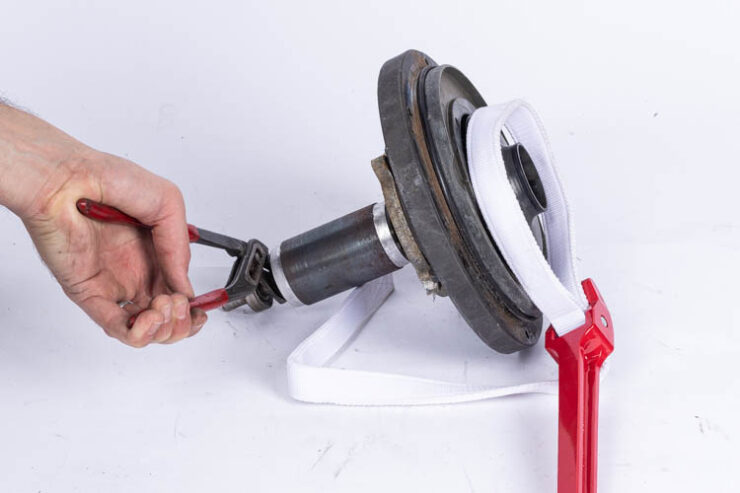
Step 6) Fit the New Impeller
Before you fit the impeller, it’s a good idea to change the shaft seal whilst you’re there. Half the seal is seated in the seal plate whilst the other half is on the impeller.
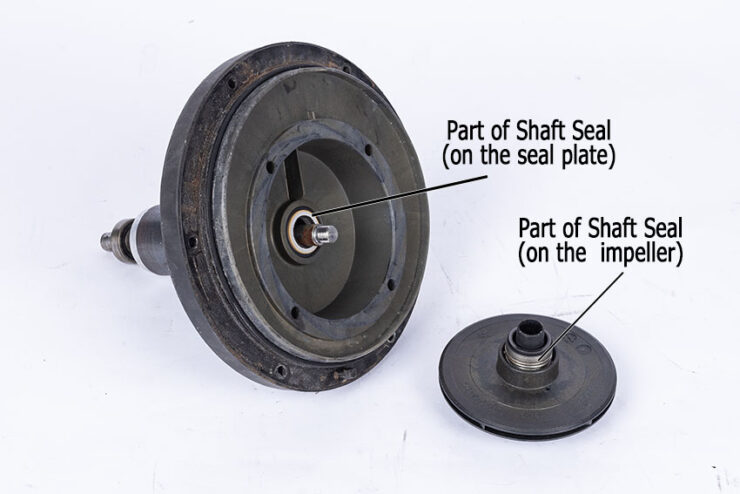
Note which way around these seals goes before removing them. They only fit one way and will cause your pump to leak if they are not fitted correctly.
Important: Do not touch the ends of the seals with your hands, the oils on your hands can wreck the seal.
After the shaft seal is replaced, screw the new impeller back onto the shaft in a clockwise direction. It doesn’t need to be tight and don’t use thread-lock or anti-seize products. Hand tight is fine.
Further Reading: How Do You Know If Pool Pump Shaft Seal Is Bad?
Step 7) Reassemble the Pump
Reassembly is just the reverse. Before you reassemble, replace both the diffuser seal and the pump housing seal. This will ensure you don’t have any leaks anytime soon.
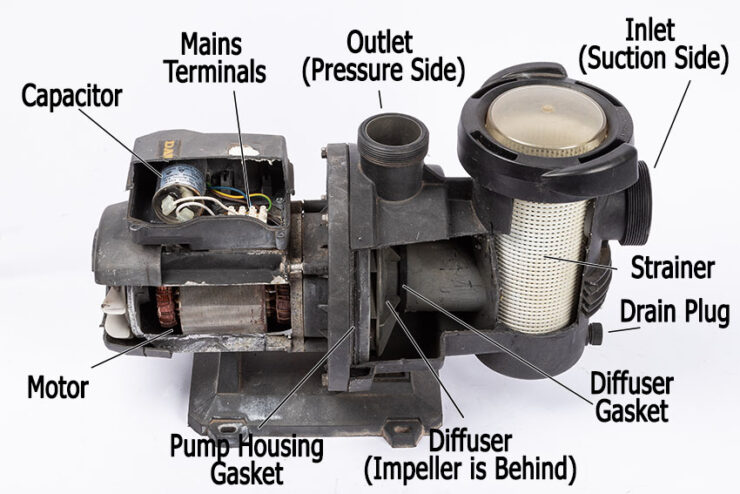
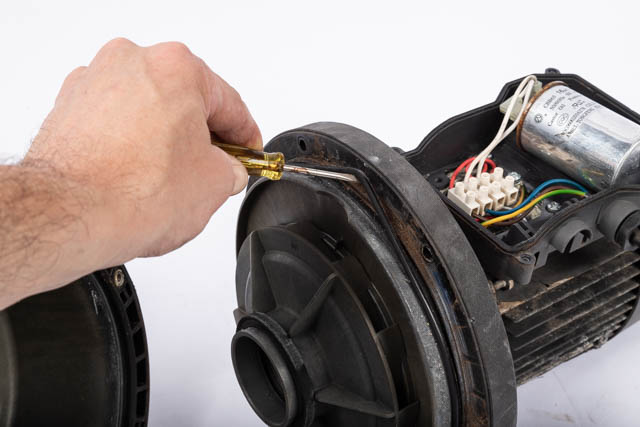
How Do You Know if the Impeller is Bad?
Before you go and take apart your pump, how do you know if the impeller does need to be changed?
Some signs that the impeller isn’t right are:
- Reduced water flow coming out of the pump.
- The pressure reading on the filter is likely to be low compared to the normal reading.
- Your pump may also be making grinding sounds.
Of course, it could be that the impeller is just clogged.
You’ll only be able to confirm the impeller is bad after dismantling the pump and removing the impeller for a visual inspection. Look for cracks or damage. Also, check the threads of the impeller that go on the pump shaft are not stripped and are in good condition.
How Long Do Impellers Last?
The impeller will often last as long as the pump itself. But it is equally possible for the impeller to crack or break due to age.
Hard debris getting caught in the impeller can also damage it. The impeller is only made from plastic.
The Pool Pump Impeller is Stuck on the Shaft
If you can’t get the impeller off, you may need to remove the motor shaft to remove it. Or in some cases, you’ll need to cut or break the impeller off. We have a full article on removing impellers that won’t unscrew.


